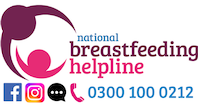This information can also be viewed as a PDF by clicking here.
The information provided is taken from various reference sources. It is provided as a guideline. No responsibility can be taken by the author or the Breastfeeding Network for the way in which the information is used. Clinical decisions remain the responsibility of medical and breastfeeding practitioners. The data presented here is intended to provide some immediate information but cannot replace input from professionals.
Optimal Medicinal Treatment Choice:
|
Causes of travel sickness
Travel (Motion) sickness can occur when you are travelling in a car, ship, plane or train. It is caused by a contradictory set of signals from the eyes and the inner ear balance mechanism. It affects different individuals in different ways and may be very difficult for a mother who needs to respond to her infant.
Treatment of travel sickness
- Treatment may be achieved by simple remedies such as avoiding heavy meals and fresh air. However some mothers may need medication if their symptoms are severe or prolonged e.g. a long flight or sea crossing. It may be important that the mother is not made drowsy by the remedy if she has to care for the child during the journey.
- Frequently travel sickness remedies are based on antihistamines e.g. promethazine (Avomine®, Phenergan® Lloyds Pharmacy own brand travel sickness®). Although the passage of these sedating remedies may produce some drowsiness in the baby, in the short term this is unlikely to cause major difficulties with milk supply and may assist the journey by sedating the baby. If the baby is excessively drowsy it may need to be woken and prompted to feed to prevent dehydration.
- Another antihistamine but which generally causes less sedation is cinnarazine (Stugeron® Boots motion sickness®
- Other remedies rely on the anti-muscarinic action of hyoscine and may make the mother thirsty but less drowsy e.g. Kwells®, Joy Rides®.
Most drugs for travel sickness can be purchased in a community pharmacy. Many of us have remedies which we have come to trust as effective for us. Remedies are often licensed to be taken by children.
Self-help techniques
- Keep still – if possible, choose a cabin or seat in the middle of a boat or plane, because this is where you’ll experience the least movement. Use a pillow or headrest to help keep your head as still as possible.
- Look at a stable object – for example, the horizon. Reading or playing games may make your symptoms worse. Closing your eyes may help relieve symptoms.
- Fresh air – open windows or move to the top deck of a ship to avoid getting too hot and to get a good supply of fresh air.
- Relax – by listening to music while focusing on your breathing or carrying out a mental activity, such as counting backwards from 100.
- NHS Choices Motion Sickness www.nhs.uk/conditions/Motion- sickness/Pages/Introduction.aspx
Fear of flying
Some people find that they need tranquillisers (e.g. diazepam) or a beta blocker (e.g. propranolol) if they are very anxious e.g. for long haul flights. These can be prescribed by your doctor. To discuss the safety of the dose you have been prescribed please contact the Drugs in Breastmilk Helpline druginformation@breastfeedingnetwork.org.uk
Complementary therapies
- Several complementary therapies have been suggested for motion sickness, although the evidence for their effectiveness is mixed.
- Ginger supplements, or other ginger products including ginger biscuits or ginger tea, may help to prevent symptoms of motion sickness. Although there’s little scientific evidence to support the use of ginger to treat motion sickness, it has a long history of being used as a remedy for nausea and vomiting.
- Acupressure bands are stretchy bands worn around the wrists. They apply pressure to a particular point on the inside of your wrist between the two tendons on your inner arm. Although acupressure bands don’t cause any adverse side effects, there’s little scientific evidence to show they’re an effective treatment for motion sickness.
- Homeopathic remedies e.g. Nelson’s Travella has limited research but is not harmful to the breastfed infant if it is a remedy which the mother finds useful.
Bibliography
- British National Formulary – BMA and RPSGB
- Toxnet http://toxnet.nlm.nih.gov/cgi-bin/sis/htmlgen?LACT
- Hale T. Medications in Mothers Milk
- Jones W Breastfeeding and Medication Routledge 2018
©Dr Wendy Jones MBE, MRPharmS and the Breastfeeding Network Sept 2019

